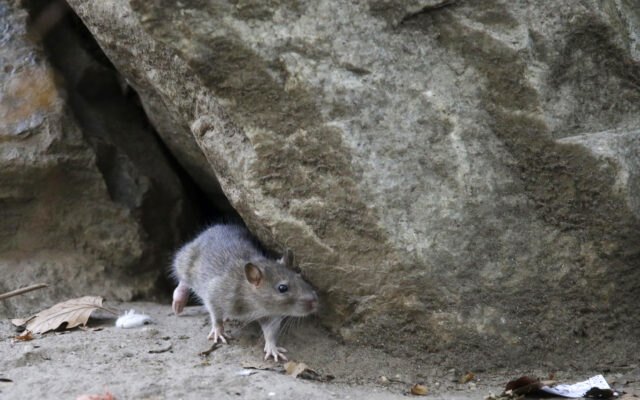
Rats may already be living in your house this winter
By Julia Bayly, Bangor Daily News Staff
Just like people, rats avoid the cold of a Maine winter by going inside. And that migration can be all it takes to turn an annoying outside pest issue into a full blowin indoor infestation.
Because despite the fact you don’t see them over the winter, it does not mean rats aren’t there.
The most common rat in Maine is the Norway rat, according to Griffin Dill, pest management professional with the University of Maine Cooperative Extension. It’s an invasive species that arrived here hundreds of years ago on ships from Asia and Europe. Norway rats live in large family groups and that can be bad news for anyone dealing with them.
They have been particularly bad in Maine over the past couple of years. Milford found itself with an exploding rat population last summer. Meanwhile farms and homesteads around the state reported increased numbers of the rodents. People were trapping, poisoning and even calling in specially trained dogs to deal with the problem.
Among the reasons for the population boom is the pandemic, which eliminated a major food source for the rats. When restaurants closed down for dine-in eating due to COVID restrictions, it meant no restaurant food waste going into trash dumpsters.
That forced the rats to seek food elsewhere. They found much of that food on homesteads and in residential trash now filled with take-out food waste.
“Rats are not migratory so they have unfortunately not gone anywhere for the winter,” Dill said. “They are still around and potentially active.”
While not true hibernators, rats do slow down to conserve energy in the winter, according to Dill.
“In the winter they can be found if they have taken up residence in your home, garage, barn, chicken coop or other dwellings,” Dill said. “You may not see the rat, but their presence can be seen.”
Signs of chewing, droppings or evidence of a pest getting into stored food can all indicate rats are around.
“If they are already in your home or other building it is very unlikely they are going to venture outside during the winter,” Dill said. “The chances are they have found a nice warm spot that meets all their needs with warmth, food and water [and] at this point it’s too late for prevention and at this point you are dealing with an infestation.”
But that’s no reason to surrender your home or outbuilding to the rats.
In fact, winter is a good time to look for how the rats are getting inside. He recommends using the simple thermal imaging cameras used in home energy audits. That equipment can detect cracks and holes that, along with letting in cold air, can be letting in rats.
As for the ones already inside? It may take rat traps or professional exterminators to get rid of them.
“You need to deal with them,” Dill said.